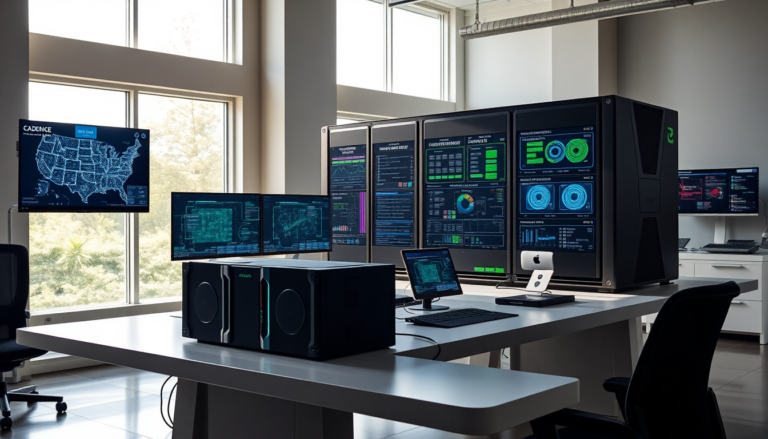Argomenti trattati
In the ever-evolving landscape of technology, the introduction of the Millennium M2000 supercomputer by Cadence marks a significant leap forward in the realm of AI-powered applications. During the CadenceLIVE Silicon Valley 2025 event, the company unveiled this cutting-edge supercomputer, equipped with Nvidia RTX Pro 6000 Blackwell Server Edition GPUs and advanced HGX B200 systems. This system is designed to cater specifically to electronic design automation (EDA), system design and analysis (SDA), and drug discovery, offering performance that outstrips traditional CPU-based systems by an astonishing factor of up to 80 times.
The foundation of the Millennium M2000’s architecture
Cadence has a rich history in EDA, providing tools that empower companies to develop chips with enhanced efficiency. Esteemed clients such as Intel, AMD, Apple, and Nvidia rely on Cadence’s solutions to create the next generation of chip technology. The recent expansion into industries such as computational fluid dynamics (CFD) and life sciences has further solidified Cadence’s position as a leader in high-tech solutions. Notably, organizations like GE and NASA utilize Cadence’s systems for intricate fluid dynamics simulations, while pharmaceutical giants like Pfizer and AstraZeneca leverage its capabilities for drug discovery and molecular modeling.
The design of the M2000 supercomputer is a testament to Cadence’s commitment to integrating AI technology. By utilizing Nvidia’s advanced systems, Cadence has optimized the M2000 for unparalleled efficiency, achieving a remarkable 20-fold reduction in power consumption across multiple applications. This optimization is not only beneficial for performance but also aligns with the growing need for sustainable computing solutions.
Revolutionizing productivity in AI engineering
According to Cadence’s CEO, Anirudh Devgan, the Millennium M2000 is poised to revolutionize AI-accelerated engineering. By harnessing powerful solvers, dedicated Nvidia Blackwell-accelerated computing, and AI technologies, the M2000 aims to enhance designer productivity significantly. Devgan emphasizes that this supercomputer is purpose-built for the most advanced AI models of today and the future, promising to propel innovation across various sectors, including physical AI systems and drug discovery.
The arrival of specialized AI solutions has transformed numerous industries, with various companies offering tailored systems at different price points. For instance, the TinyBox AI accelerator, featuring six RX 7900XTX or RTX 4090 GPUs, starts around $15,000, making it accessible for small to medium enterprises. In contrast, massive AI data centers, like Elon Musk’s Memphis Supercluster, have staggering costs estimated between $3 to $4 billion solely for hardware. The Millennium M2000 occupies a strategic position in this spectrum, with each unit priced around $2 million. This investment not only eliminates the need for contracting data centers or hyperscalers for computing time but also allows customization to meet specific business needs.
Future outlook and industry impact
The unveiling of the Millennium M2000 supercomputer underscores Cadence’s dedication to driving advancements in AI and related technologies. As industries increasingly rely on AI for design and analysis, the M2000 stands out as a game-changer that promises to enhance productivity and efficiency. Companies interested in leveraging this technology can expect a significant return on investment, given the machine’s capability to reduce operational costs while boosting performance.
As the tech landscape continues to evolve, innovations like the Millennium M2000 will be crucial in shaping the future of AI-powered solutions. With its advanced architecture and commitment to sustainability, Cadence is setting a new benchmark for the industry, paving the way for further exploration and breakthroughs in AI technology.

